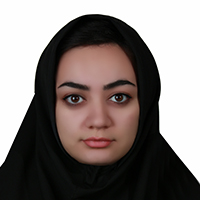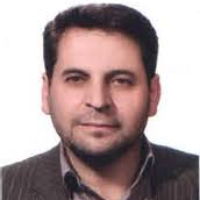Comparison of the Effectiveness of Transcranial Direct Current Brain Stimulation (tDCS) and Computer-based Cognitive Rehabilitation on Improving Cognitive Emotion Regulation in Children with Attention deficit/hyperactivity Disorder
Attention deficit/ hyperactivity disorder is one of the most common neurodevelopmental disorders. The purpose of this study was to compare the effectiveness of Transcranial Direct Current Brain Stimulation (tDCS) and computer-based cognitive rehabilitation on improving cognitive emotion regulation in children with attention deficit/ hyperactivity disorder.
The current research design was experiment with pre-test-post-test and control group. The statistical population included children with attention deficit/ hyperactivity disorder in Ardabil city who referred to the psychiatric center of Fatemi Hospital in Ardabil city in 2023. From this population, 60 children with attention deficit/ hyperactivity disorder were selected by purposeful sampling and randomly replaced in three groups: experiment 1, experiment 2, and control (20 people in each group). Data were collected using Connors Parent Rating Scale (1978), Raven's Progressive Matrices Test (2000) and cognitive emotion regulation scale (2002). The subjects of the first experimental group received Transcranial Direct Current Brain Stimulation (tDCS) for 10 sessions and twice a week for 20 minutes. The second experimental group also received Captain Log's computerized cognitive rehabilitation intervention for 10 sessions and twice a week for 45 minutes. The control group did not receive any intervention. Data analysis was done with SPSS version 25 software and with covariance analysis and Bonferroni's post hoc test.
The results showed that there is a significant difference between the groups in emotion regulation (P<0.05). The experimental groups of transcranial direct current brain stimulation (tDCS) and computer-based cognitive rehabilitation had higher emotion regulation compared to the control group. Also, by controlling the effect of the pre-test in the two experimental groups, there is no significant difference between the two methods of transcranial direct current brain stimulation (tDCS) and computer-based cognitive rehabilitation (P<0.05).
According to the results, it can be said that the intervention of transcranial direct current brain stimulation (tDCS) and computer-based cognitive rehabilitation were effective in improving the cognitive regulation of emotion in children with attention deficit/ hyperactivity disorder. Therefore, both interventions can be used to improve the cognitive regulation of emotions in children with attention deficit/ hyperactivity disorder.
-
Standardization the Scale of Violent Extremism and Study its Relationship with the Approval of Social Violence Against Women
Bahman Esmaeili Anamagh, *
Social Psychology Research, -
The effectiveness of Compassion Focused Art Therapy on Psychological Capital and Anger Rumination in Abused and Orphaned Adolescents
Zahra Saeedi, *, Mohammad Narimani, Alireza Hosseinisadr
Rooyesh-e-Ravanshenasi, -
Designing and Evaluating the Structural Model of Dark Personality Traits of Students Based on Childhood Trauma and the Mediating Role of Early maladaptive schemas.
Saifullah Aghajani, Shayan Noori Lasaki, Reihaneh Afkhami, Mohammad Zarei Nouroozi *
Achievements of Clinical Psychology, -
The Effectiveness of Positive Parenting to Mothers on Self-efficacy and Resilience of Children with Specific Learning Disorders
Afsane Shokri, Hir *
Journal of Learning Disabilities, -
Comparison of Parenting Styles, Marital Satisfaction and Mental Well-being in Mothers with and without Stuttering Children
Hir, Alireza Moradian *, Pezhman Honarmand, Parviz Porzoor
Journal of School Psychology,





